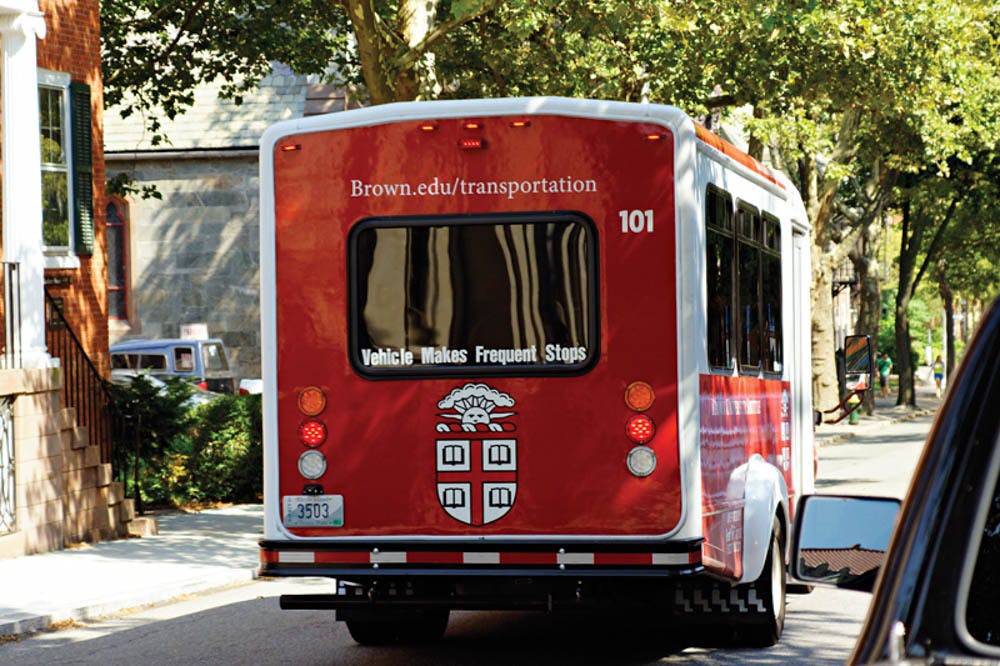New University Shuttle drivers will be required to complete 66 hours of cumulative classroom and road session training prior to starting their positions, an increase from the 54 hours currently required for the intensive training program for BUS drivers. The change, which will be finalized within the next month, is part of an universal update to new driver training programs across all locations overseen by First Transit, the transportation operations organization that manages the University’s shuttle services.
Travis Mills, general manager at First Transit, explained that the new training will be implemented as an updated version of the company’s previous training protocols and will primarily feature additional classroom instruction. Training modules that will be updated include customer service and defensive driving, Mills said. Defensive driving refers to skills taught to drivers to ensure they can protect themselves and their passengers against unforeseen circumstances such as drunk drivers or inclement weather, according to driversed.com.
According to Mills, the updates are being made to keep First Transit’s training procedures in-line with Federal Motor Carrier Safety Administration and Federal Transit Administration regulations. The changes are “just making sure we’re up-to-date on the (FMCSA and FTA) training standards,” he said. “Oftentimes we meet or exceed the training standards.”
The University currently requires its shuttle drivers to participate in a training program over the course of several weeks before they start working, in accordance with First Transit regulations. First Transit began its partnership with the University in July 2013 and now employs roughly 35 shuttle drivers to drive an operating fleet of 19 shuttles, Mills noted.
Shuttle drivers also must be “professionally licensed” and pass “extensive background checks” in order to begin driving, according to the Transportation and Parking Service website. Prior to starting the job, shuttle drivers at the University must also have three years of prior driving experience, though it does not necessarily have to include professional driving experience, Mills noted. But, if drivers came from a similar type of driving job within the past six months, “there is a slight reduction in the number of hours of training required,” Mills said.
Al Caberio, a BUS driver on the express route, worked as a RIPTA driver for ten years before arriving at Brown three years ago. Caberio said that driving for RIPTA made navigating the training easier and also reduced his required training.
“I’ve been driving RIPTA buses so (driving the BUS) is nothing,” Caberio said. Since his RIPTA route followed many of the same roads, learning the BUS route was “pretty easy,” Caberio added.
As it currently stands, new driver training begins with a road training where drivers start on a closed driving course practicing maneuvers. “They might be doing alley docking, serpentine type maneuvers … and just learning the spacing of the vehicle,” Mills said. Drivers also practice in the neighborhoods around campus in order to gain comfort on roads without too many people and distractions.
During this process, drivers also undergo classroom training where they learn the ins and outs of their position — a part of the training process that will be increased with the updated training procedures, according to Mills.
In his training roughly two years ago, William Murray, a BUS driver who covers the daytime connector route, said there was a significant emphasis on classroom instruction. “There are all kinds of videos and classroom training sessions,” Murray said.
Once drivers are comfortable with their vehicles, “we go into our advanced road work, driving around Brown, where the roads are quite narrow, a lot of traffic and a lot of pedestrian activity,” Mills said. While shuttle drivers have bus routes displayed on digital monitors to follow if needed, they are expected to learn the routes prior to driving the vehicles, he added.
The final step of training, known as cadet training, is when the new driver completes the route they will cover with an experienced BUS driver.
“Once you’ve done all the training and (First Transit) feels you’re qualified, you’re given a route, and that’s about it,” Murray said.
According to Mills, drivers also play an important role in supporting one another in the learning process. He said that many drivers share a sense of camaraderie as they navigate their routes.
“A lot of our senior drivers have been around for several years now,” Mills said. They “share a good rapport together.”





